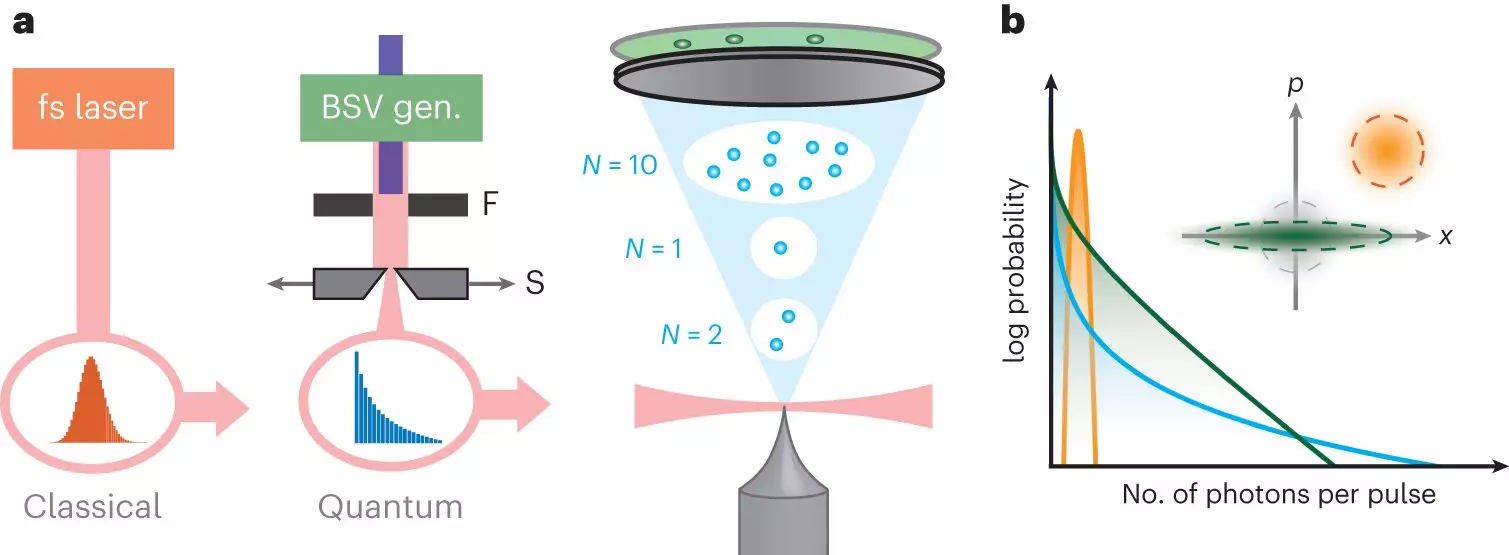In recent years, the field of strong field quantum optics has been gaining traction as an emerging area of research. This field combines elements of non-linear photoemission, rooted in strong field physics, with the well-established realm of quantum optics. While the distribution of photons in classical and non-classical light sources has been extensively studied, the impact of these distributions on photoemission processes remains a topic of ongoing exploration.
A recent study conducted by researchers at Friedrich-Alexander-Universität Erlangen-Nürnberg (FAU) and the Max Planck Institute for the Science of Light delved into the interactions between light and matter using a non-classical light source. The study, published in Nature Physics, revealed that the photon statistics of the driving light source were directly correlated with the electron number statistics of emitted electrons from metal needle tips. This observation has significant implications for the future development of optical devices.
The research team, led by Jonas Heimerl and Peter Hommelhoff from FAU, collaborated closely with Professor Maria Chekhova, an expert in bright squeezed vacuum generation and quantum optics. By leveraging non-classical light sources, such as bright squeezed vacuum, the researchers were able to trigger photoemission processes from tiny metal needle tips. These experiments shed light on the interactions between quantum light and matter, offering new insights into the manipulation of electron emissions.
One of the key findings of the study was the direct influence of the driving light on the number of electrons emitted during photoemission processes. This discovery has important implications for imaging applications, particularly in the imaging of biological molecules. By modulating the number of electrons used in imaging, researchers may be able to reduce the risk of damage to sensitive biological samples. This could open up new possibilities in the field of electron microscopy and imaging techniques.
Moving forward, the researchers aim to explore the possibility of imprinting different photon distributions on electrons, such as those with reduced noise levels. This could prove to be a challenging task, but one that holds promise for advancing the field of strong field quantum optics. The team believes that their recent findings are just the beginning of experimental research in this field, with many theoretical investigations already underway. The collaboration between experts in strong field physics and quantum optics is expected to pave the way for exciting new developments in the field.
The convergence of quantum optics and strong field physics represents a promising avenue for future research. By leveraging non-classical light sources and exploring the interactions between quantum light and matter, researchers are uncovering new possibilities for manipulating electron emissions and developing innovative optical devices. As this field continues to evolve, it is likely to lead to groundbreaking discoveries with far-reaching implications across various scientific disciplines.


Leave a Reply